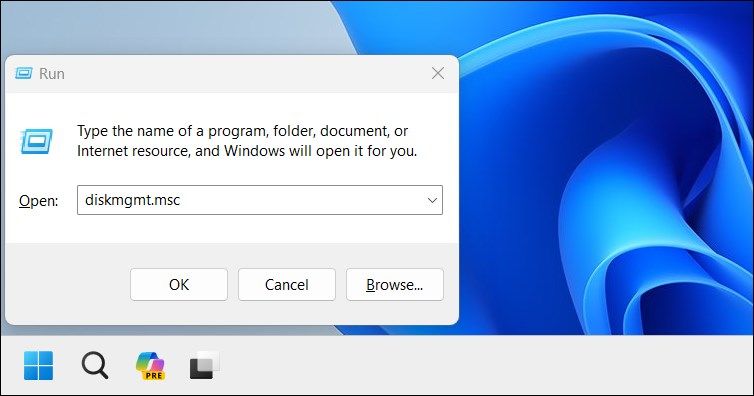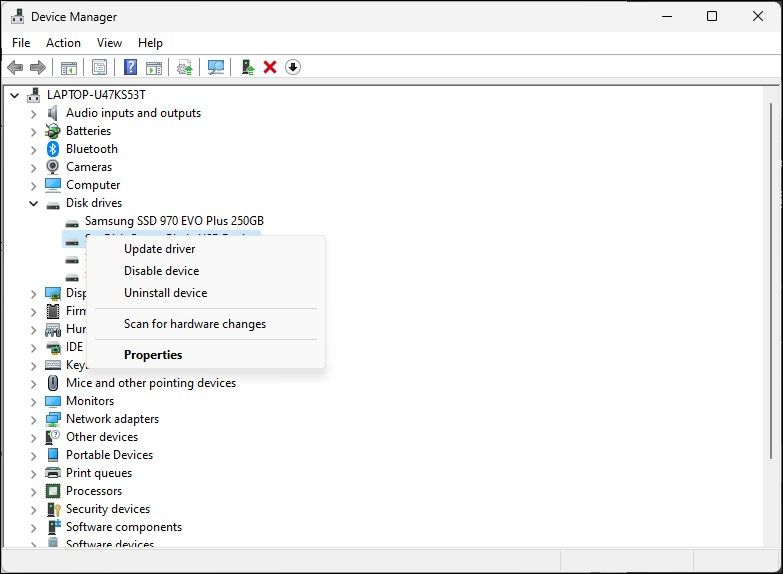
SD cards are convenient to use with your computer to transfer photos or as extra storage. But if you can't access yours, we'll guide you through troubleshooting tips to make Windows detect your card again.
Storage devices like SD cards may not appear in your File Explorer due to temporary glitches. But if reconnecting the SD card reader doesn't fix the issue, there are other common reasons the issue can persist:
Before you start troubleshooting, ensure that the SD card is compatible with your SD card reader. Some older readers may not support newer SD card formats.
If the SD card wasn't used for an extended period, the contacts on the card and the adapter may have accumulated dust and debris. As a result, your computer may fail to recognize or detect the SD card.
Gently clean any dust you see on your SD card and the adapter. Then, connect the SD card reader firmly and wait for the computer to detect the device. Make sure the card is inserted firmly into the reader itself. Also, switch to a different USB port and see if that helps—you may have a dead USB port that won't work with any device.
Each memory device connected to your system is assigned a drive letter by default. If these identifiers are missing, you cannot access files stored in the drive directly. Thankfully, you can assign a new drive letter in a few clicks.
To check if your SD card is missing the drive letter and assign one if needed:



You can also make a drive letter available for use in case drive letters are missing, or there is a drive letter conflict.
Once done, close the Disk Management tool. Disconnect and reconnect your SD card reader and check if it appears in File Explorer.
It's important to check if your SD card has write protection turned on. When write protection is enabled, your SD card is read-only, so you can’t add or delete any data on the storage device. This may also trigger the disk is write protected error, hinting at an obvious issue.
To turn off write protection on your SD Card:
Check Disk (CHKDSK) is a Windows command-line utility that scans your driver for errors. It can scan drives for file system errors and bad sectors and fix them automatically. Here’s how to use CHKDSK to check and fix SD card errors:



Device Manager lists all the devices connected to your computer, including hardware with errors. See if you can locate the SD card in Device Manager to perform further troubleshooting steps:




The device status shows if your device is enabled or disabled, followed by an error code or message. If disabled, click Enabled and check for any improvements. Any error messages present can help you troubleshoot your specific issue.
Your computer may fail to recognize or detect the external storage device due to outdated or missing device drivers. Fortunately, you can easily update device drivers from Device Manager. Here’s how to do it:

After the drivers are installed, restart your PC. Connect your SD card reader again and check if it appears in File Explorer. If the problem persists, reinstall the drivers from scratch.
If updating the device driver did not help, try reinstalling the SD card driver. You can perform driver updates and reinstallation from Device Manager:

A corrupted SD card may not show up in File Explorer. To make sure your SD card is not corrupted, connect it to another computer. You may have a file system corruption issue if it doesn't work on other devices.
Thankfully, a quick format can fix any data corruption issues.
Formatting your SD card will erase all its data. Be sure to back up any files you need before proceeding.
To format your SD card:
 To format the storage drive, right-click on the device and choose Format.
To format the storage drive, right-click on the device and choose Format.
Faulty memory card readers are a common cause for SD cards not showing up in Windows File Explorer. Opt for an external card reader that connects to a USB port. Otherwise, Windows automatically detects portable storage devices such as SD cards and shows them in File Explorer.
Windows 11 also resolves many hardware issues through Windows updates, which include the latest drivers and fixes, so do check if you have the latest updates installed on your PC.
The above is the detailed content of SD Card Reader Won\'t Show in File Explorer? Here\'s How to Fix It. For more information, please follow other related articles on the PHP Chinese website!




